Lately I have noticed that a lot of what would be considered game improvement irons are becoming very playable for better players. Even Zach Johnson had a Titleist AP1 in his bag when he won the 2015 Open Championship and many amateurs have followed suit in appreciating the extra forgiveness.
Having a oversized, forgiving and accurate long iron or two before your hybrids is almost becoming a category in itself and that is what Ping are trying to identify with the G Crossover Iron.
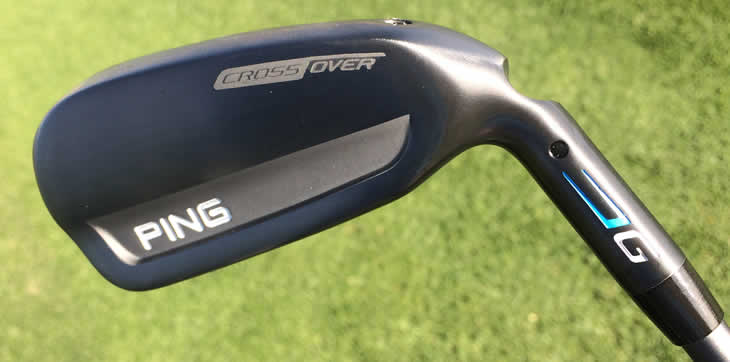
I am calling it an iron, because it is not really a hybrid, even though it really is. It combines the hollow head of a wood with the playability of an iron and before you say 'driving iron', I must advise you that Ping say it is definitely not that.
Like you have crossover cars that are sporty and take 5 kids, Ping say that the Crossover club bridges the gaps between irons and hybrids. A gap I am sure you didn't realise you had, but the more I played with the Crossover, the more it made sense.
When I first put it down at address it instantly reminded me of the Ping G15 Hybrid which was not much of a looker but did the job well.
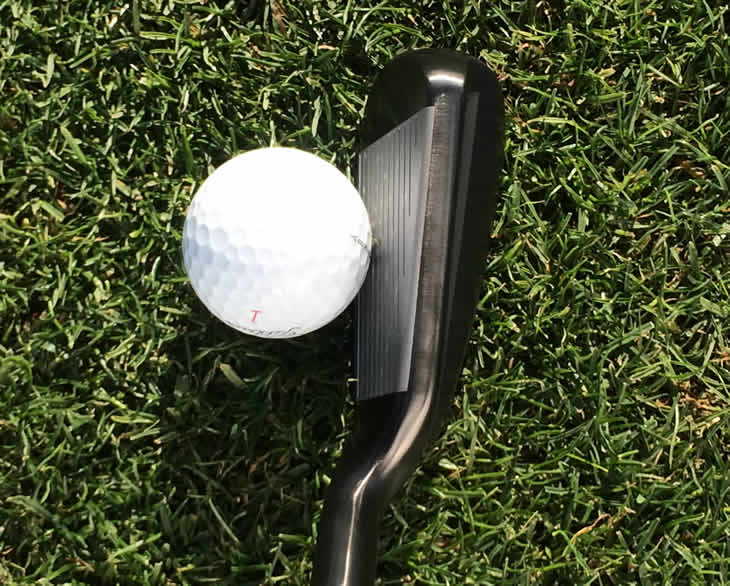
The Crossover is better looking than that with its stealthy black finish but it may still be an acquired taste.
The generous head is made from 17-4 Stainless Steel with a Carpenter 455 Steel face insert that is lighter and stronger so that it can be made thinner.
Inside there is a Tiered Internal Sole just behind the face to enable it to flex a little more at impact and works with the thinner top line to generate some extra ball speed.
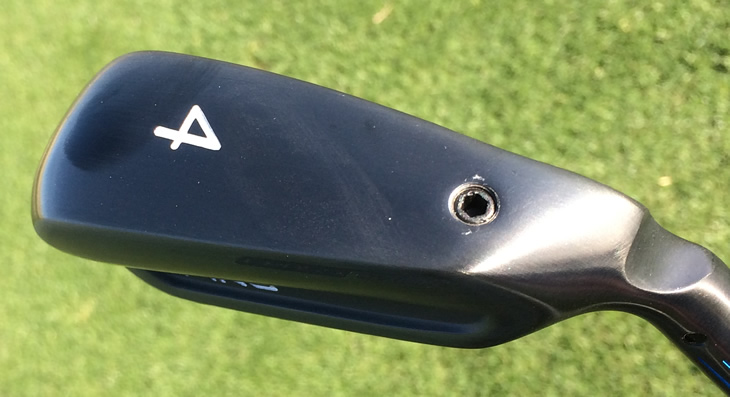
Also inside is a lot of weight in the toe to counter the weight of the club in the heel and create a head that maximises forgiveness.
The G Crossover comes in a Ping Blue lie as standard, but like all Ping irons, can easily be adjusted using the notch in the hosel.

The face is flatter and taller than the G hybrid and it will generate more spin than an iron, but with a lower launch so that makes those stinger shots possible.
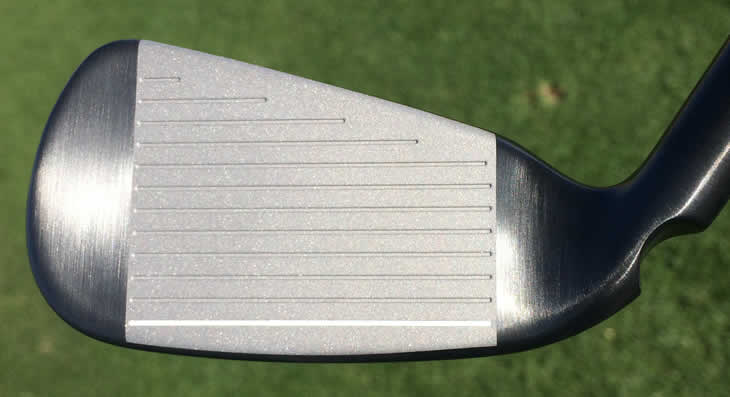
Right from the first shot I was taken by the Crossover. The flight was higher than the equivalent lofted G 4-iron and almost as high as the G Hybrid, but it felt better than both of them.
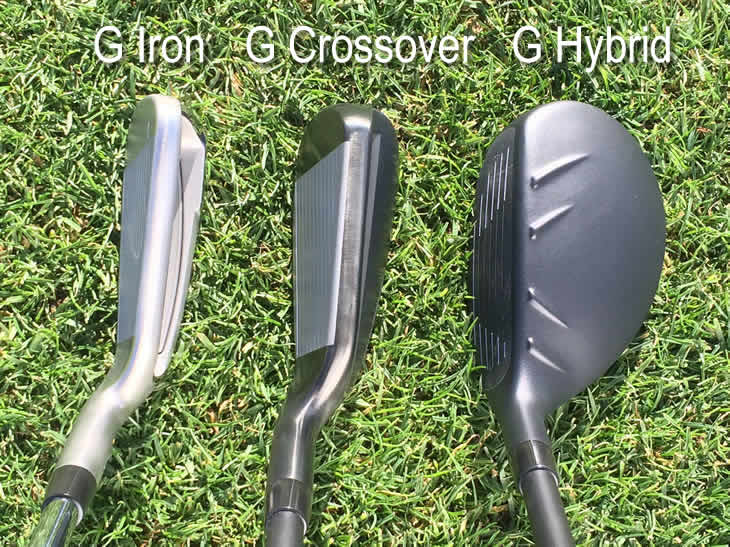
This was partly because it acts like an iron at impact and goes into the turf so you therefore hit the ball higher on the face, nearer the middle, than you do with a hybrid.
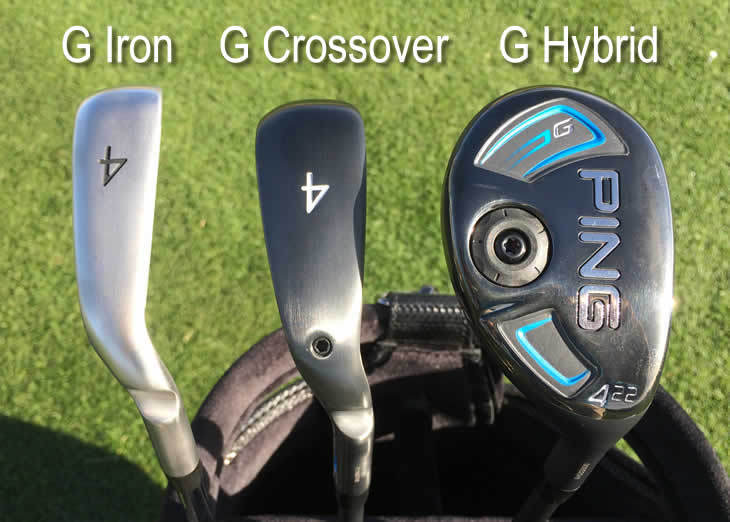
The wide sole gives a decent level of bounce to help it going through the turf just as well as a regular iron regardless of the firmness of the surface.

From my Trackman comparison it was clear I was getting a higher launch with less spin and more carry and total distance with the G 4-Crossover than the G 4-iron or G 4-hybrid. I mean, what is not to like about that?

The G Crossover is available in three official lofts of 18° (#3), 21° (#4) and 24° (#5) which seem to be on the strong side, but probably corresponds to flight heights as they do go further than you would expect for the number. I have also seen some #2 models in Tour player's hands, so maybe they will come out soon too.
The G Crossover comes with a lightweight Ping AWT 2.0 steel shaft or a Alta High balance point graphite shaft and both work well with the head.


Ping has had a few goes at this part of the bag over the years from the G15 hybrid, G20 hybrid and Rapture driving iron. With the G Crossover, they could have the product that breaks out from the pack and does indeed create a new category.
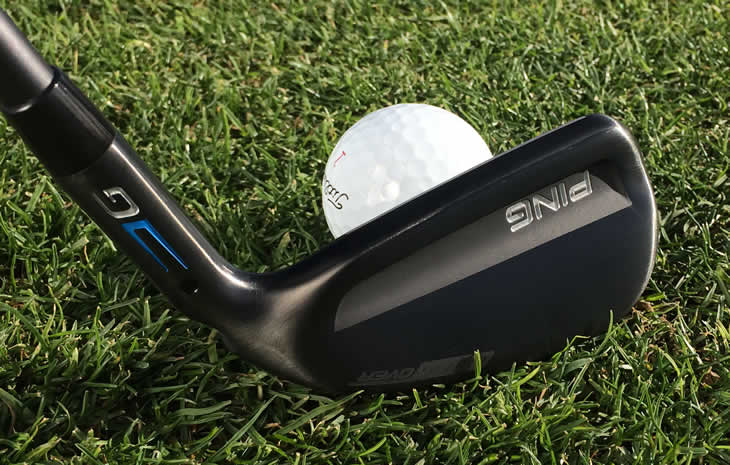
I hope so because not only did it perform, but it was great fun to hit. Anyone who struggles with long irons or better players who have not got to grips with hybrids should definitely give this a try.